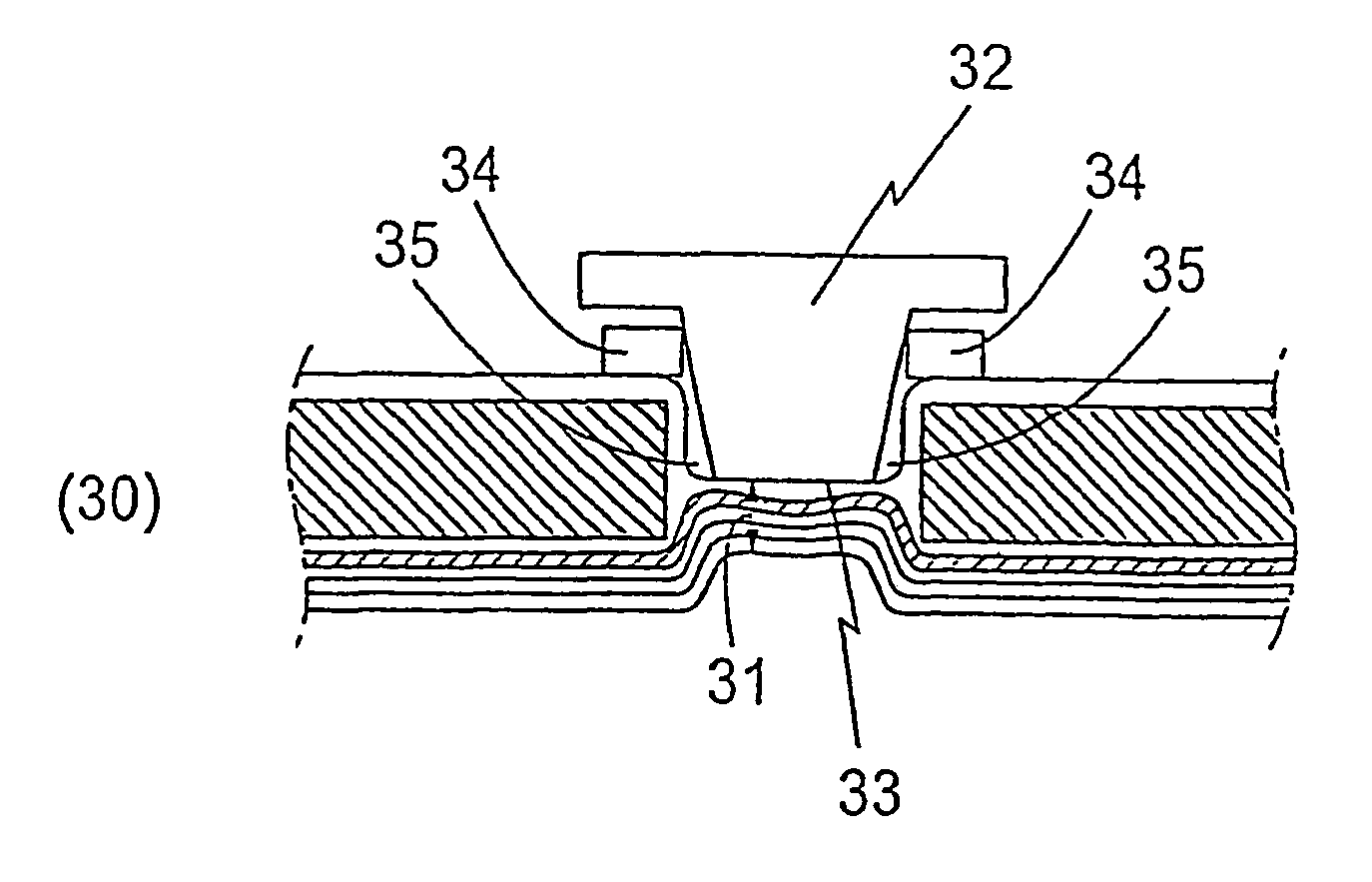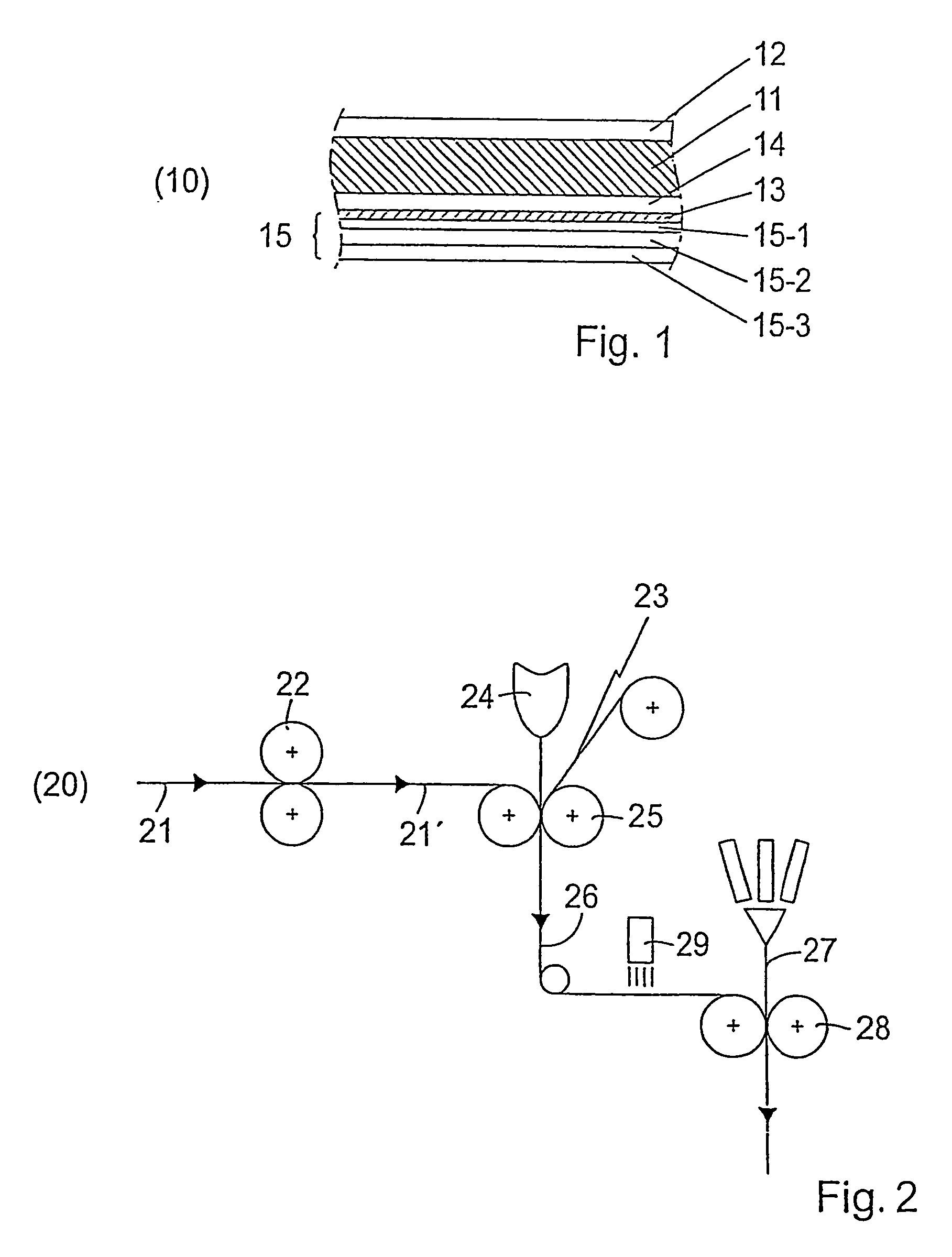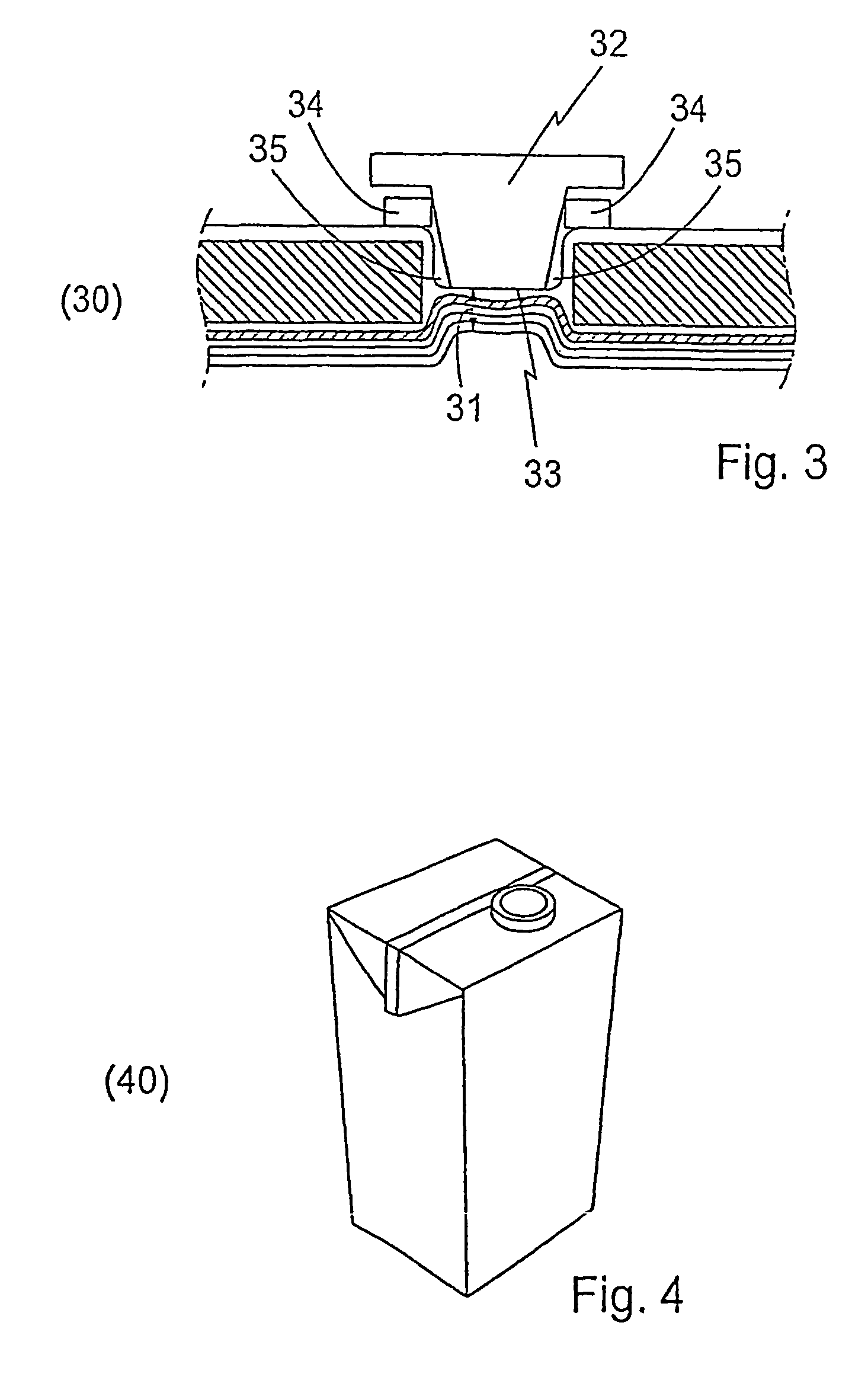Packaging laminate, method for its manufacturing and packaging container manufactured from the packaging laminate
a technology of packaging laminate and packaging, which is applied in the direction of flexible covers, lamination, containers, etc., can solve the problems of affecting the integrity of the package, the gas tightness of the packaging container, and the difficulty of obtaining adequate adhesion in the holes, so as to improve the adhesion, improve the adhesion, and increase the stability of the extruded melt film
- Summary
- Abstract
- Description
- Claims
- Application Information
AI Technical Summary
Benefits of technology
Problems solved by technology
Method used
Image
Examples
Embodiment Construction
[0062]Referring to FIG. 1, the packaging laminate of the invention 10 includes a core layer 11, which is a configurationally rigid but foldable paperboard or carton. The core layer is provided with going-through holes, opening or slits for the purpose of applying opening arrangements on the packages manufactured from the packaging laminate. On one side, being the outer side of a package produced from the laminate, i.e. the side facing outwards away from the filled food product, of the core layer 11, a layer of heat sealable thermoplastics 12 is applied, which also provides a liquid and moisture barrier to that side of the core layer. The outer thermoplastic layer is preferably applied in a quantity of about 10-17, preferably 12 g / m2, and is in particular a polyethylene, such as a low density polyethylene (LDPE).
[0063]On the other, inner, side of the core layer, facing towards the inside of a package produced from the laminate, a gas barrier layer of an aluminium foil 13 is applied b...
PUM
| Property | Measurement | Unit |
|---|---|---|
| thickness | aaaaa | aaaaa |
| thickness | aaaaa | aaaaa |
| thickness | aaaaa | aaaaa |
Abstract
Description
Claims
Application Information
 Login to View More
Login to View More - R&D
- Intellectual Property
- Life Sciences
- Materials
- Tech Scout
- Unparalleled Data Quality
- Higher Quality Content
- 60% Fewer Hallucinations
Browse by: Latest US Patents, China's latest patents, Technical Efficacy Thesaurus, Application Domain, Technology Topic, Popular Technical Reports.
© 2025 PatSnap. All rights reserved.Legal|Privacy policy|Modern Slavery Act Transparency Statement|Sitemap|About US| Contact US: help@patsnap.com



